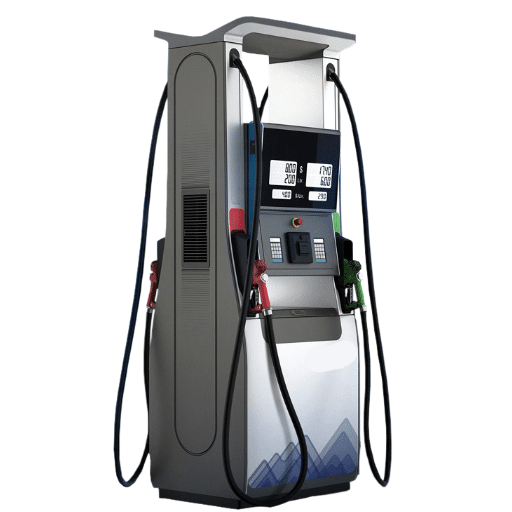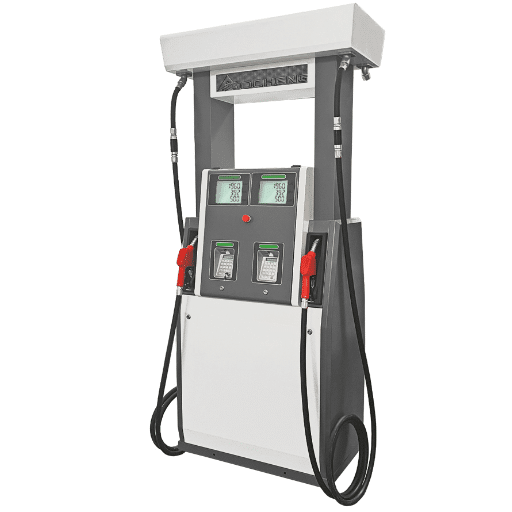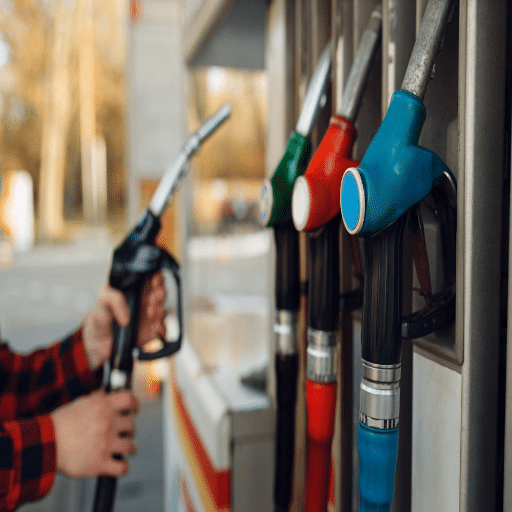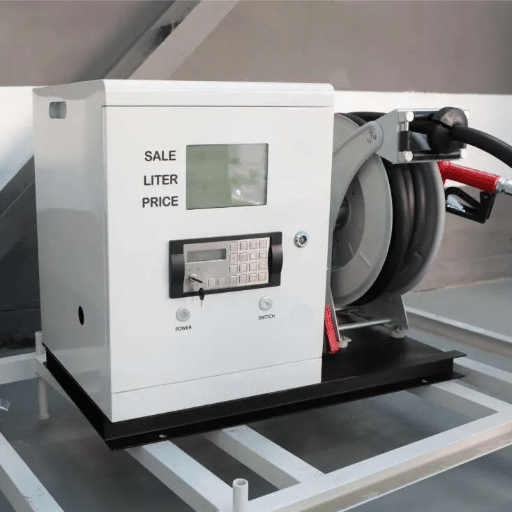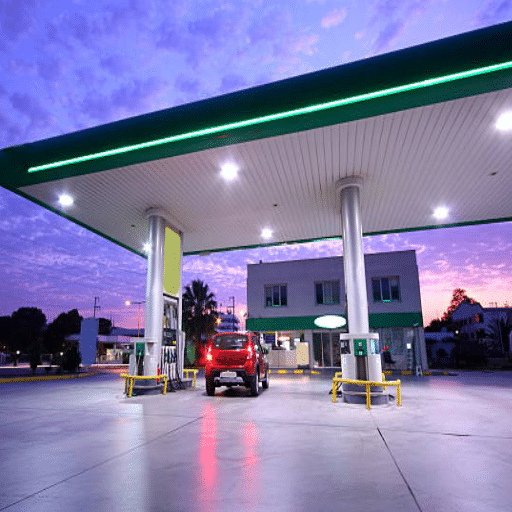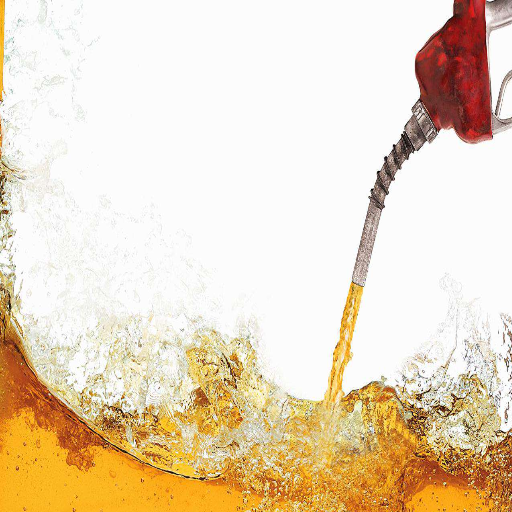Whenever your vehicle is being refueled at a gas station, take a moment to consider the system that handles the fumes emitted during the process. However, in the realm of preventing air pollution and protecting the environment, big technology plays a significant role. Vapor recovery nozzles work directly in this respect to ensure the detrimental fuel vapors are captured and recycled rather than being emitted into the atmosphere. This article takes a deep dive into the hows and whys of vapor recovery nozzles and how they form the bedrock of a modern vapor recovery system. After reading this article, the reader will gain an appreciation of the contribution of these innovations toward clean air and a healthy planet.
Understanding Vapor Recovery Systems
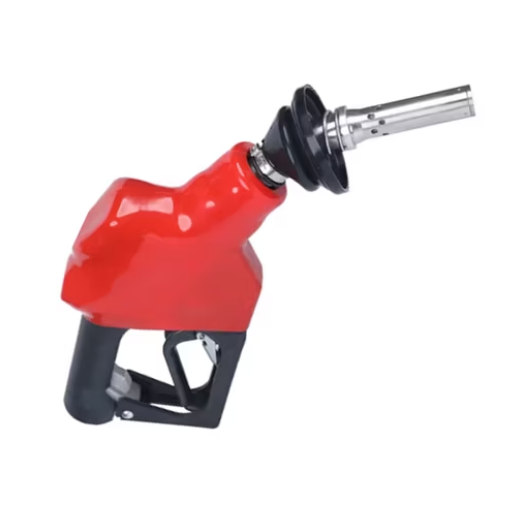
By preventing the escape of fuel vapors into the atmosphere, vapor recovery systems are designed to mitigate air pollution. These systems collect the vapors for either recycling and reuse or containment to prevent any environmental hazards they may pose. Such systems are often found at fuel stations, refineries, and storage facilities; they function to reduce noxious emissions into the atmosphere, thereby contributing to cleaner air.
What is a Vapor Recovery System?
The vapor recovery system captures all the volatile organic compounds released during fuel transfer or storage. Vaporized fuel emissions that ascend into the air during tank filling processes are harmful to the air if left uncontrolled. The cells in the vapor recovery system collect these vapors in a closed system of valves, pipes, and hoses, diverting the vapors to a control device that either processes and condenses them in liquid form or incinerates them safely.
This system is up to 95% efficient in containing VOC emissions, thereby alleviating environmental concerns. For example, Stage I vapor recovery systems capture vapors when fuels are being transferred from a delivery truck into an underground storage tank. At the same time, Stage II systems capture vapors during the refueling of vehicles at gas stations. According to recent data, the implementation of these systems has prevented millions of tons of VOC emissions annually, thereby improving air quality and reducing the potential risks associated with ozone formation and smog. Vapors recovered can be helpful as some vendors either sell them or divert them by recycling them into the fuel supply chain, thus adding both environmental and economic benefits.
Importance of Vapor Recovery in Environmental Protection
The modernized systems of vapor recovery have become more efficient, thus enabling better control over the emission of VOCs and other pollutants. Enhanced Stage II vapor recovery systems capture vapors during vehicle refueling with increased precision. According to some reports, they capture as much as 95% of fuel vapors, thus immensely reducing their release into the atmosphere.
Air pollution abatement is hence so much necessary in this respect, especially in urban areas where vehicle emissions are a substantial cause of smog and ozone formation. While at it, turning the vapors into usable fuel avoids the wastage of resources. Industry data have shown, for example, that the integration of advanced systems could save millions of gallons of fuel every year, leading to huge savings and lesser dependency on primary extraction.
The continued evolution and deployment of vapor recovery systems underscore the growing importance placed on these systems to ensure a sustainable future while addressing air quality concerns.
Components of a Vapor Recovery System
A vapor recovery system includes several key components that act in tandem to capture and control vapor emissions. A detailed breakdown of these components is given below:
Vapor Recovery Unit (VRU): At the heart of the system is the VRU, which collects VOC vapors from storage tanks or transportation vessels. Through compression, condensation, and absorption, these units recover vapors and reverse the phase to the liquid form, allowing for reuse.
Piping and Containment Systems: These systems carry vapors from the source to the VRU. The pipes are made of materials resistant to corrosion and exposure to VOCs, guaranteeing safety and reliability. Containment procedures ensure that no leakage into the atmosphere occurs, complying with regulations on air quality.
Pressure Relief Valves: They serve to prevent over-pressurization, maintaining proper pressure within the release systems and thereby limiting accidents or emissions. For instance, pressure relief valves that are well maintained can reduce VOC leaks by as much as 90% during normal operations.
Sensors and Monitoring Equipment: The use of sensors is amongst the finest technologies available, with continuous monitoring of the vapor concentration, tank pressure, and system performance. Advanced systems may integrate automated monitoring, providing real-time alerts to operators about potential system issues, thereby increasing efficiency and environmental protection simultaneously.
Activated Carbon or Adsorption Filters: These filters work by adsorbing VOCs onto a solid medium, thereby reducing emissions. It has been reported that an excellent choice of activated carbon can boost the recovery rate beyond 95%, thereby maximizing the system’s sustainable impacts.
Recovery Tanks: Vapor conversion back to liquid takes place in the recovery tanks. These tanks are equipped with primary containment to hold the recovered liquids for safe disposition until reuse or processing is performed.
The combination of these components enables vapor recovery systems to comply with stringent regulatory requirements and achieve considerable operational efficiencies; for instance, modern systems can achieve recovery rates of up to 99%, resulting in direct cost savings and environmental protection benefits. The integration of these technologies with data-driven monitoring enables an industrial setting to evolve in line with sustainability goals while ensuring operational excellence.
Functionality of Vapor Recovery Nozzles
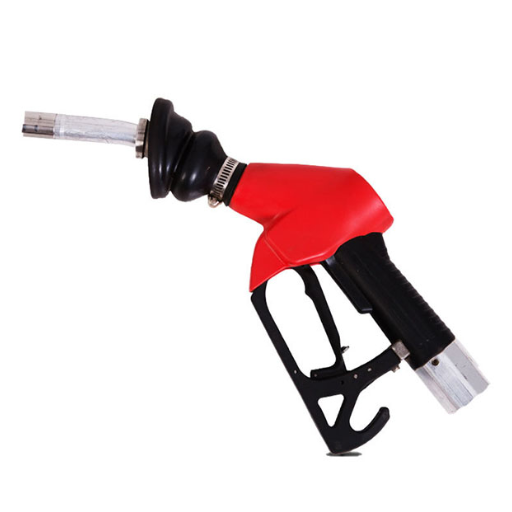
During the refueling process, fuel vapors are emitted from the tank and collected by the vapor recovery nozzle for storage and reuse. These vapors, if free to escape, act as air pollutants. The nozzle utilizes pressure differentials and seals to capture and contain the vapors, preventing them from dissipating into the atmosphere. These technologies make vapor recovery nozzles eco-friendly and compliant with regulations, thereby promoting cleaner air and safer fuel handling.
How Vapor Recovery Nozzles Operate
Vapor recovery nozzles are powered by a host of mechanical and technological components to trap fuel vapors as they are being emitted from the fuel tank during refueling. To begin with, a tight seal is formed between the nozzle and the vehicle’s fuel tank, preventing vapor from escaping. Around the nozzle, a diaphragm or boot seal may create a closed system to prevent vapors from escaping in the wrong direction.
After being sealed, vapors travel along a recovery line into a vapor recovery unit via a pressure differential created within the nozzle, either underground or externally. The vapor recovery unit then either processes and compresses the vapors into liquid fuel or stores them safely. The latest vapor recovery nozzles are equipped with more advanced sensors, which can accurately calculate the air-to-fuel vapor ratio, enabling more efficient recovery and reduced waste. It has been scientifically proven that these systems can perform vapor recovery for over 95% of the refueling process, hence discretely decreasing VOC emissions.
Most nozzles are equipped with Stage I or Stage II vapor recovery systems, with Stage I being applied during the delivery of fuel to storage tanks. At the same time, Stage II captures vapors generated during the refueling process. Developments in these types of recovery systems not only reduce the toxic state of the world but are also enforced by the EPA. Moreover, innovations such as self-sealing valves and automated monitoring ensure reliable system operation with minimal manual input.
In turn, this set of mechanisms makes the vapor recovery nozzle the primary pathway for reducing pollution and promoting sustainable fuel-handling practices in the modern, climate-conscious world.
Types of Vapor Recovery Nozzles
Vapor recovery nozzles capture fuel vapors displaced during refueling and redirect them to an underground storage tank, thereby preventing their release into the atmosphere.
|
Key Point |
Description |
|---|---|
|
Purpose |
Capture vapors |
|
Mechanism |
Displacement-based |
|
Design Feature |
Self-sealing valves |
|
Monitoring |
Automated systems |
|
Compliance |
EPA regulations |
|
Efficiency |
Reduces emissions |
These nozzles play a pivotal role in minimizing environmental pollution and adhering to modern sustainability standards.
Benefits of Using Vapor Recovery Nozzles
Air Pollution Reduction: Vapor recovery nozzles effectively prevent the release of harmful fuel vapors, such as VOCs, into the atmosphere. These VOCs significantly contribute to smog and ozone formation, posing serious health and environmental risks. Studies suggest that vapor recovery systems can reduce VOC emissions by as much as 95%, thereby enhancing air quality and public health.
Less fuel is wasted: vapors are prevented from escaping outside the fuel system during the refueling process by recovery nozzles. These vapors are then converted back into liquid and stored, thus saving on fuel loss and wastage. This restoration of vapors is a cost-saving mechanism for businesses that preserves natural resources, a global effort that is underway.
Regulatory Compliance: Governments worldwide impose stringent regulations on fuel vapor emissions, including the EPA in the United States. Vapor recovery nozzles ensure that these environmental regulations are adhered to, thereby limiting punitive and enforcement actions against industries responsible for selling or trading fuel.
Reduced Risk to Workers and Customers: Exposure to fuel vapor can lead to respiratory illnesses and long-term health hazards. The vapor recovery nozzles prevent toxic fumes from escaping into refueling jurisdictions, protecting workers and customers from inhaling hazardous emissions and creating a safer working environment.
Contributing to Sustainability Goals: These systems support sustainability programs by significantly reducing the environmental impact of fuel handling. By reducing the greenhouse gas emissions associated with VOCs, companies join international climate change initiatives and achieve their carbon reduction targets.
Economically Attractive Solutions: Although vapor recovery may require an initial investment, it proves cost-efficient in the long run due to savings on fuel, compliance costs, and operational expenses. Some places may even offer grants or subsidies to operations that implement green technologies, such as the vapor recovery system.
Implementing vapor recovery nozzles marks a significant step in promoting industrial responsibility and environmental sustainability, yielding tangible benefits for businesses, communities, and ecosystems.
Vapor Recovery Nozzles in Action

Vapor recovery nozzles capture harmful vapors released during fuel transfer processes such as vehicle refueling. The nozzle features a sealing mechanism that prevents detrimental vapors from escaping into the air and directs them back into the fuel storage system. This prevents air pollution, thereby aiding in the improvement of air quality and supporting compliance with environmental laws. These nozzles also help prevent further resource vaporization, thereby providing a solution to economic and ecological concerns.
Installation Process at Gas Stations
Installing vapor recovery nozzles at gas stations requires meticulous planning and strict adherence to regulatory standards, ensuring both the safety and efficient operation of the facility. The site assessment is the first step taken to verify the compatibility of existing fuel-dispensing equipment with vapor recovery systems. If it is compatible, the station operator must then procure certified vapor recovery nozzles in compliance with environmental standards, such as those promulgated by the Environmental Protection Agency (EPA) or its counterparts in other regions.
The installation of vapor recovery nozzles often requires that dispensers be upgraded or retrofitted to accommodate these nozzles. Included in this installation is the connection between the nozzles and the vapor recovery piping system that reroutes fuel vapors to the underground storage tanks. Technicians at the last position are responsible for checking and verifying that the system is leak-free and functional by conducting pressure or vacuum tests to ensure compliance with emission control standards. Industry statistics indicate that vapor recovery systems can reduce emissions of volatile organic compounds (VOCs) by up to 95% during the refueling process, thereby substantially improving air quality.
Hence, continued efficacy depends upon training station operators in the maintenance and use of the nozzles. Regular inspections and system testing are necessary to comply with environmental regulations and prevent costly fines or undesirable malfunctions. Thus, by procuring high-quality equipment and following a well-defined installation procedure, gas station operators can ensure a better environment and increase operational efficiency.
Maintenance and Safety Considerations
Proper maintenance and safety checks are beneficial for gas station equipment, ensuring its longevity and smooth functioning. Vapor recovery systems should be inspected at least quarterly for wear and tear and any potential leaks, as recommended by industry standards. Evidence indicated regular maintenance of systems could reduce fugitive emissions by 95%, thus meeting environmental criteria.
Operators must routinely inspect hoses, nozzles, and seals to prevent fuel spills or vapor leaks resulting from faults or damage. Dispensing-equipment inspections, for instance, can bring a component’s lifespan up by 20 to 30% while simultaneously reducing environmental hazards.
With training comes safety and maintenance. In other words, employees must be trained to identify hazards, such as blocked vents or damaged containment systems, that could result in safety incidents. Emergency shut-off systems are to be tested quarterly, and records are to be maintained by safety codes to reduce the likelihood of accidents.
With the help of newer monitoring techniques, such as automated leak detection systems, operators can identify problems in real-time. They are known to slash maintenance charges by approximately 30% and respond to failures more quickly. By installing remedies for improved maintenance and safety, gas station operators not only protect their equipment but also work toward creating a safer and more environmentally friendly station.
Future of Vapor Recovery Technology
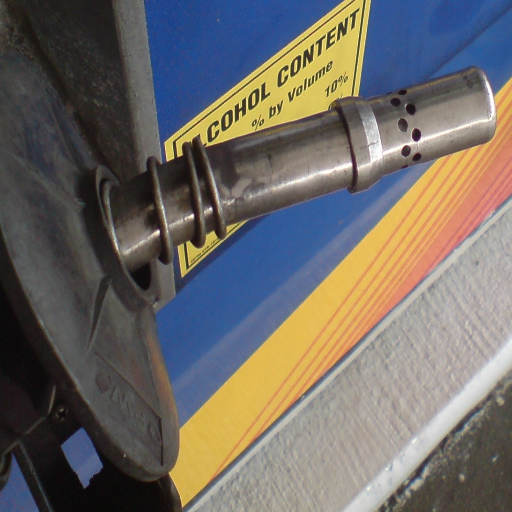
Vapor recovery technology is poised to take its place in the evolutionary trends that promote efficiency, lower costs, and conservation of the natural environment. Systems in this category aim to increase recovery rates, thereby minimizing emissions, and enable digital monitoring of these systems to track their performance in real-time. Automation and sensor-based systems marry control for seamless operations, adapting to changes in environmental regulations. Operators using them will enjoy reduced maintenance and operational burdens while also reducing emissions of harmful vapors into the environment.
Innovations in Vapor Recovery Systems
Better Materials and Increased Efficiency: Modern vapor recovery systems are incorporating cutting-edge materials to deliver enhanced durability and efficiency. For example, corrosion-resistant alloys and high-performance polymers help lengthen component half-lives when exposed to harsh hydrocarbons. Still, they also pose their own set of maintenance pains and downtime. Membrane technologies, which provide optimized selective gas permeability, effectively separate and recover valuable vapors, such as methane and VOCs (Volatile Organic Compounds), achieving recovery rates of up to 99%, depending on the system configuration.
Integration of IoT and Data Analytics: Integration of IoT-enabled vapor recovery systems enables the creation of smart operational hubs. Smart sensors allow real-time monitoring of pressure, temperature, and gas composition, providing operational data. Advanced data analytics continue to improve, ensuring that optimization applies to systems, identifies bottlenecks, and facilitates predictive maintenance. Such innovation reduces unplanned downtime and strengthens regulatory compliance, thereby ensuring peak performance of the systems.
Cost Savings and Green Footprint: The enhanced vapor recovery technologies not only reduce emissions but also lower operational costs. Reports suggest that, depending on operational scale, the state-of-the-art recovery system components are capable of reclaiming tens of thousands of dollars’ worth of lost vapors annually. Beyond that, in mitigating emissions, these newer systems make significant headway toward achieving global climate targets by reducing a measurable percentage of a facility’s carbon footprint.
Industry Outlook: Expectations continue to emphasize energy efficiency and sustainability, driving the rapid evolution of vapor recovery systems. Machine-learning and AI developments are expected to further enhance system performance by automatically adjusting based on feedback from operations, ensuring continual compliance with increasingly stringent environmental standards and improved recovery yields. Research institutions collaborating with leading industry companies will continue to be crucial in shaping the next generation of innovative solutions in this field.
Regulatory Changes Impacting Vapor Recovery
Environmental concerns and the effort to reduce greenhouse gas emissions worldwide have placed severe pressure on the regulatory environment regarding vapor recovery over the last years. Governments and environmental agencies worldwide have begun to outline more stringent regulations aimed at minimizing the release of volatile organic compounds during industrial and storage activities. For example, the United States Environmental Protection Agency (EPA) continues to evolve the New Source Performance Standards (NSPS), which set stringent permitted emissions limits for VOCs, requiring industries to install state-of-the-art vapor recovery technologies.
Similarly, the Industrial Emissions Directive (IED) in the European Union requires the implementation of Best Available Techniques (BAT) to control the discharge of air pollutants from industrial activities, including the emission of VOCs. Emerging controls in nations such as India and China are also becoming tighter, as these countries vigorously strive to comply with global environmental standards. The Indian government is actively promoting the implementation of vapor recovery systems at gas stations in major metropolitan cities as a measure to reduce air pollution.
Environmental studies indicate that implementing stringent vapor recovery measures can reduce VOC emissions by up to 95% in certain instances. Hence, this has allowed industries not only to meet compliance but also to create healthier workplaces by limiting exposure to toxicity. Further development in regulation is expected, particularly in light of international climate agreements, with a focus on compliance through advanced scientific recovery technology.
Expanding Use Beyond Gas Stations
There have been considerable improvements in how vapor recovery is implemented in application systems. The industries that handle the release of volatile organic compounds are using these systems increasingly to minimize the release of such pollutants into the atmosphere and to improve operational efficiency. Chemical plants and petroleum storage terminals are reportedly using VRUs to capture hydrocarbons, which can reduce emissions by up to 98 percent in some instances. These systems are of supreme importance at oil and gas extraction sites, where, depending on the control measures in place, fugitive emissions can significantly contribute to atmospheric pollution.
In another application, vapor recovery technologies are beneficial for the storage and transportation of volatile chemicals, such as pesticides and fertilizers, in the agricultural sector. Studies indicate that vapor control methodologies used in these settings substantially mitigate chemical loss, promote worker safety, and prevent deleterious environmental contamination. With the introduction of new methods, such as activated carbon adsorption and cryogenic condensation, we can expect to see the gradual incorporation of this technology into other sectors that require the highest level of emission controls.
In addition, as cities strive to comply with stringent clean air norms, vapor recovery systems are being considered for waste management and the paint industries, where VOCs are recognized as a significant contributor to air pollution. Additionally, this technology is being experimented with for incorporation into the development of sustainable fuel storage and delivery systems to meet net-zero carbon ambitions. The stated expansions mark the growing significance of vapor recovery as a common remedy for emission control across various industries.
Challenges and Solutions in Vapor Recovery Systems

Among the principal drawbacks of vapor recovery systems are the upfront cost for installation and maintenance. This raises considerations for companies regarding cost-sharing arrangements and government subsidies to promote the adoption of these technologies. Another challenge facing vapor recovery systems is the difficulty of retrofitting older equipment with modern vapor recovery technology. One solution involves developing modular systems that can be easily retrofitted into existing infrastructure. Another challenging point may be optimizing the system’s efficiency across a range of environmental conditions. Maintenance and service schedules, along with an advanced monitoring system, can significantly contribute to achieving this goal by reducing downtime. Lastly, they must adapt to their dynamically evolving regulators and hence become worthy of pliancy.”
Common Issues with Vapor Recovery Nozzles
Vapor recovery nozzles have earned a critical role in safeguarding the environment during fuel transfer, but with many challenges to overcome, they often lose their effectiveness on several occasions. A widespread problem affecting vapor recovery nozzles is worn-out seals, which result in substandard vapor containment and increased emissions. Studies have also highlighted inconsistencies in maintenance practices, which exacerbate the problem, with a damaged seal being responsible for approximately 20% more vapor leakage.
Sometimes, obstructions become a problem with the nozzle or recovery systems, blocking their function. Such obstructions are typically formed by dirt, debris, or residue from the fuel, which hampers vapor flow back into the system and reduces recovery efficiency. Early detection of such obstructions by conducting regular inspections thus counteracts this risk.
Additionally, human error is a significant concern; for instance, improper handling of the nozzle, such as over-tightening it or failing to engage the seal properly, can disrupt the vapor recovery mechanism. Efficient training for staff and consumers on proper procedures can significantly reduce such incidents.
In conclusion, technological challenges, such as sensor failure or calibration drift, affect the operation of vapor recovery nozzles. Sensor drift may cause the recovery process to miss its target, as vapor levels may not be detected correctly. Industry reports emphasize that uptime and recovery efficiency could be significantly enhanced through the extended use of sophisticated diagnostics coupled with monitoring tools. Retrofitting and thorough performance evaluation remain crucial steps in eliminating this problem.
Maintenance Best Practices
To achieve a good response from any type of vapor recovery nozzle, I ensure they undergo regular maintenance. Top priority is always given to calibrating the sensors frequently so that they function correctly and proper vapor detection occurs. From a technological standpoint, I stay up-to-date with recent developments, and on the operational side, I conduct routine inspections to minimize downtime and maintain peak recovery efficiency.
Future Innovations in Vapor Recovery Technology
As a result, solar vapor recovery technologies are expected to improve in terms of efficiency and environmental sustainability. A prominent technological innovation now leading to this includes IoT (Internet of Things) and AI-based analytics.
This type of technology enables the immediate tracking of systems, facilitating the scheduling of maintenance to optimize costs and performance. For example, sensors may be installed in vapor recovery nozzles to detect microscopic leaks and immediately alert the operators, thus greatly minimizing the release of emissions and reducing hazards.
Another new frontier in development is the use of superior materials in the design of nozzles and seals, ensuring longevity through enhanced resistance to wear and tear. Nanotechnology is also being explored to improve filtration by isolating even the tiniest vapor particles, thereby reducing environmental impact. Recent studies indicate that these enhanced filtration systems offer another 20-30% gain in recovery efficiency compared to conventional ones.
Renewable energy integration to power VRUs is another targeted innovation. This initiative aims to reduce the carbon footprint while promoting green operations, with solar panels and energy storage being among the options. Such solutions are clean energy alternatives that significantly reduce operating costs in the long run.
Lastly, in addition to acting as motivation for vapor recovery innovation, regulatory frameworks keep manufacturers keen on developing methods for canceling vapors. Innovative vapor recovery systems have been successfully employed to lower VOC emissions, thereby furthering the development of cleaner and more effective vapor recovery technologies.
Reference Sources
Frequently Asked Questions (FAQs)
What is a vapor recovery nozzle, and how does it function?
A vapor recovery nozzle is a specialized pump nozzle designed to capture harmful gasoline vapors released during the fueling process. It works by utilizing a dual passage system that allows vapors to be returned to the underground storage tank instead of being released into the atmosphere, thereby helping to reduce air pollution and protect human health.
How do vapor recovery nozzles assist in gasoline dispensing?
Vapor recovery nozzles help prevent gasoline vapors from escaping into the air during the gasoline dispensing process. When gasoline is pumped into a vehicle’s gas tank, the nozzle captures the vapor that is displaced by the incoming liquid volume, channeling it back to the storage tank. This process minimizes air pollution and complies with regulations set by air pollution control districts.
What role do balance systems play in vapor recovery nozzles?
Balance systems in vapor recovery nozzles help maintain equilibrium between the fuel flow and the vapor flow. They ensure that as gasoline is dispensed, the same amount of vapor is returned to the underground tank, which helps to manage vapor pressure and prevents overfill situations, thus enhancing safety and efficiency at dispensing facilities.
What is the difference between onboard refueling vapor recovery (ORVR) and phase II recovery systems?
Onboard refueling vapor recovery (ORVR) systems are designed to capture vapors from the vehicle’s fuel tank during the refueling process. In contrast, phase II recovery systems, such as vapor recovery nozzles, capture vapors at the gas pump. Both systems work together to reduce harmful gasoline vapors but operate at different stages of the fueling process.
How do vapor recovery nozzles help reduce air pollution?
Vapor recovery nozzles help reduce air pollution by capturing gasoline vapors that would otherwise escape into the atmosphere during fueling. By returning these vapors to the underground storage tank, they prevent the release of harmful substances that contribute to air quality issues and promote a healthier environment.
What are the advantages of using vapor recovery nozzles in San Diego County?
In San Diego County, the use of vapor recovery nozzles is essential for compliance with local air pollution control regulations. These nozzles not only help reduce harmful emissions but also enhance public health by limiting exposure to volatile liquids and their harmful vapors, making them a critical component of modern fueling infrastructure.
How do vapor recovery nozzles handle the flow rate during gasoline dispensing?
Vapor recovery nozzles are engineered to manage the flow rate of gasoline while simultaneously capturing vapors. They are equipped with features that enable smooth operation, preventing sudden stops in fuel flow that could lead to overfilling or spillage, thereby ensuring a safe and efficient refueling experience.
What happens to the gasoline vapor collected by recovery nozzles?
The gasoline vapor collected by recovery nozzles is directed back to the underground storage tank through a system of nozzles and hoses. This process ensures that the vapors are safely contained and not released into the environment, thereby minimizing the impact of gasoline vapors on air quality and human health.

